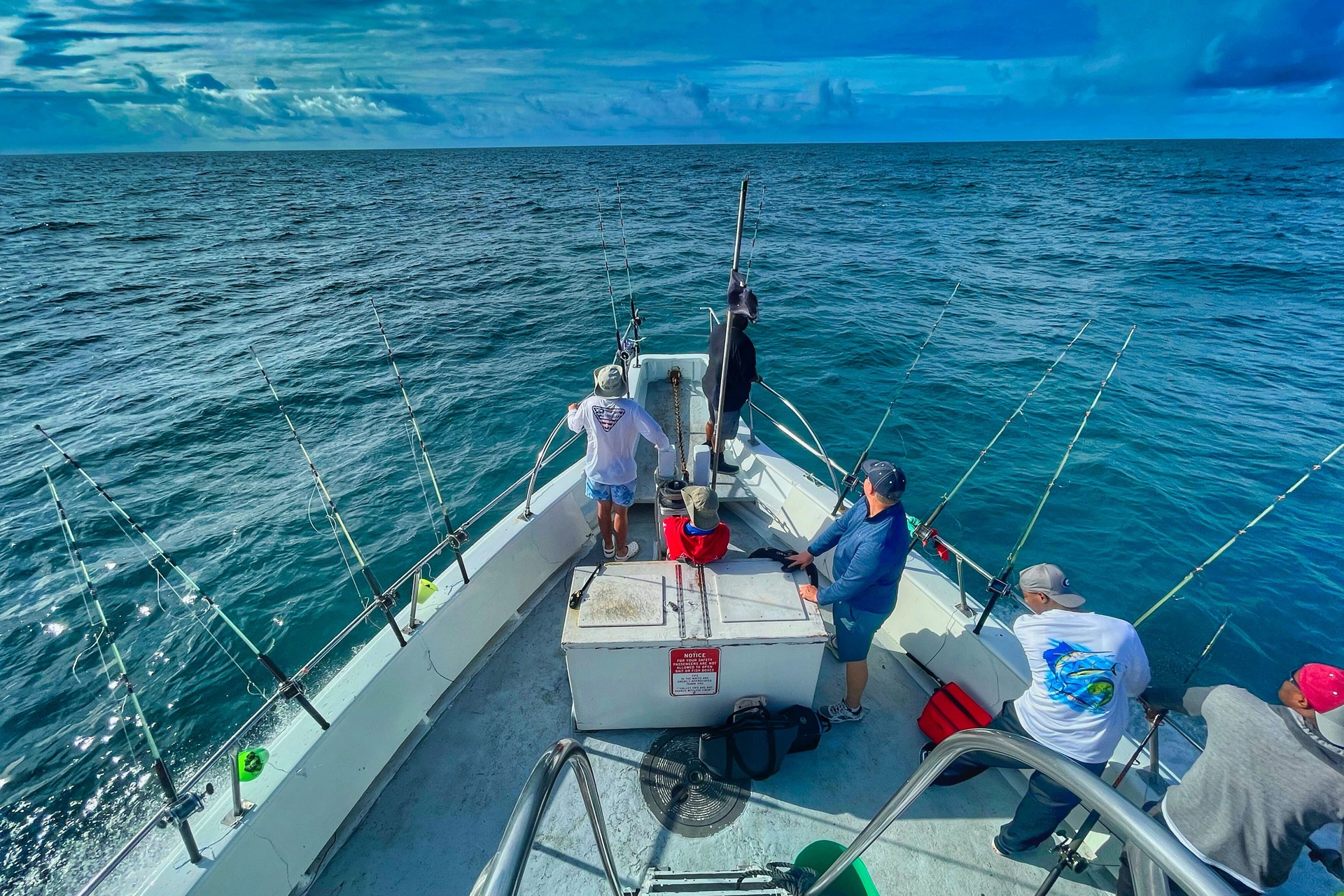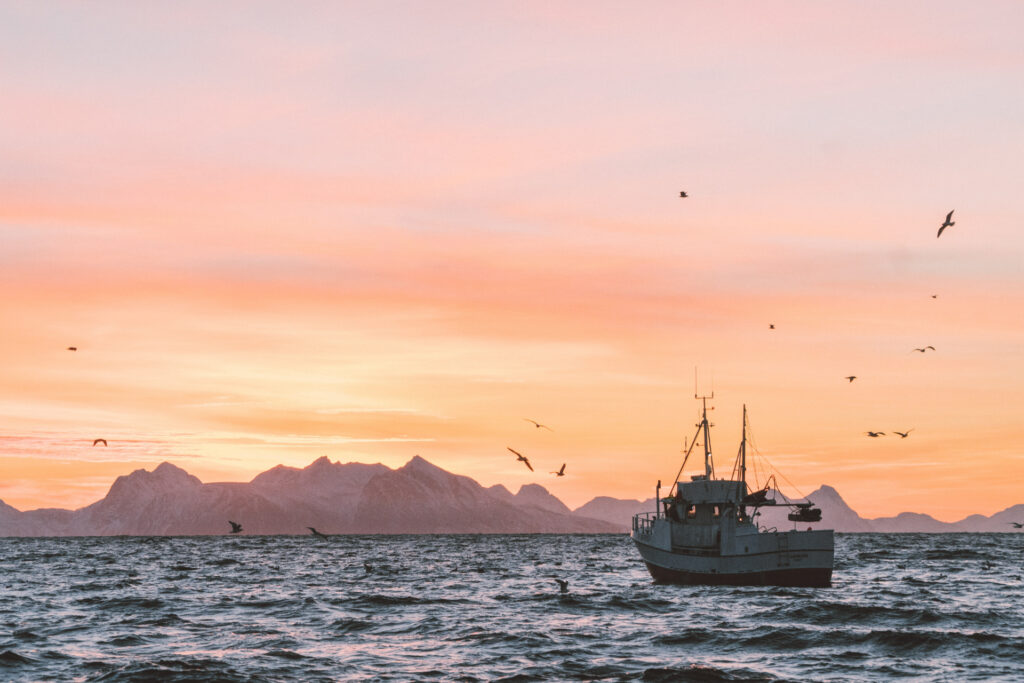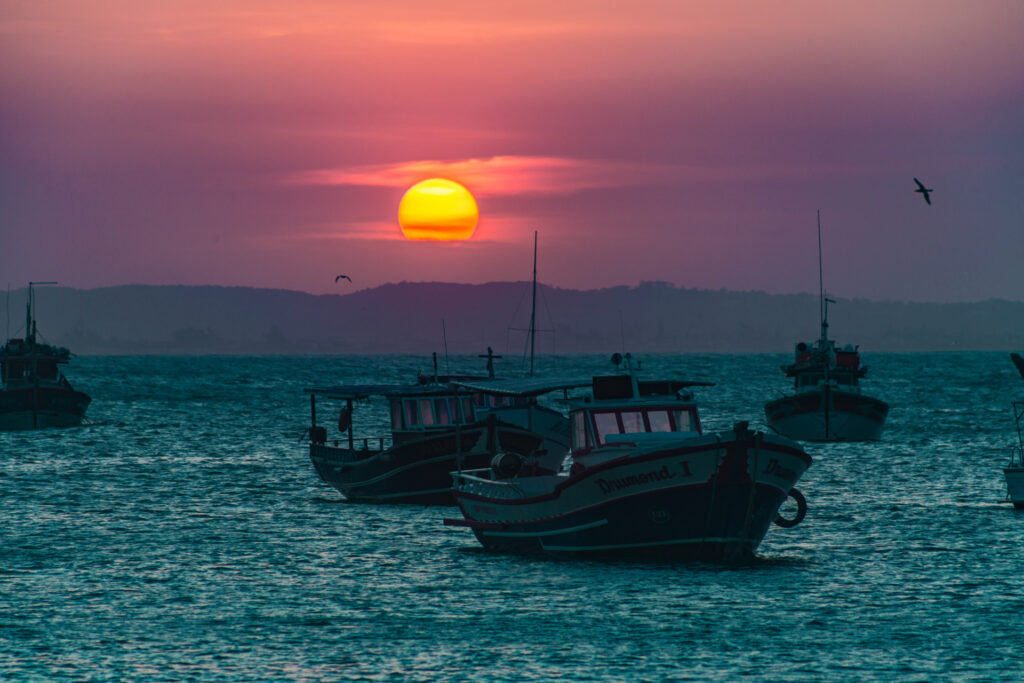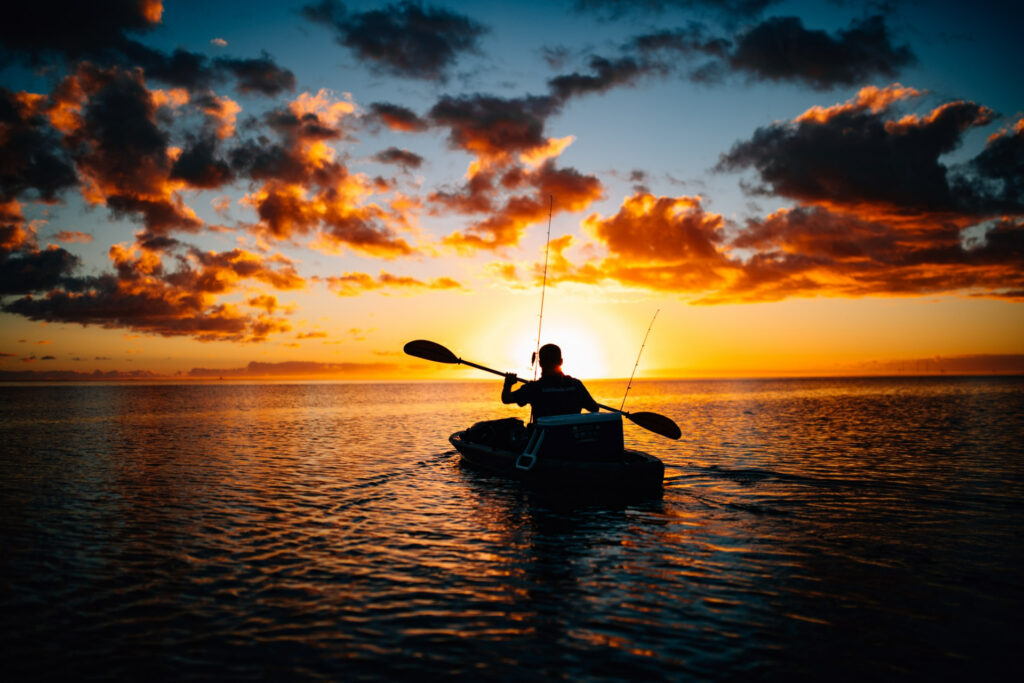
As an Amazon Associate, Modded gets commissions for purchases made through links in this post.
The best time to go saltwater fishing can be difficult to identify, even for experienced fishermen. The ocean is an unpredictable place, so there’s no definitive answer. Fishing is largely a game of chance, but a handful of factors can help you make informed decisions. This guide will help you figure out the ideal time to cast some lines in the sea and catch a big one.
Best Water Temperatures for Saltwater Fishing
Water temperature is the most important factor that determines the best time to go saltwater fishing. Saltwater fish are more sensitive to temperature changes than freshwater fish because they have access to an endless ocean. If things get too hot or too cold, they can always swim to more comfortable waters. Freshwater fish don’t always have that luxury.
Here are the optimal water temperature ranges for some of the most popular saltwater fish species, from coldest to warmest:
- Halibut: 40-42 degrees
- Pacific Salmon: 42-48 degrees
- Striped Bass: 55-68 degrees Fahrenheit
- Atlantic Salmon: 56-60 degrees
- Snapper: 58-62 degrees
- Grouper: 72-75 degrees
- Bonefish: 73-82 degrees
- Redfish: 75-88 degrees
- Tarpon: 77-81 degrees
- Billfish: 78-80 degrees
- Mahi Mahi: 80-82 degrees
Best Weather Conditions for Saltwater Fishing
You must also be able to read the weather conditions and anticipate where the fish will swim next. The weather above the water’s surface is the second-most important factor in determining the best time to go saltwater fishing. Let’s break down the most ideal weather conditions based on time of day and precipitation levels.
1. Time of Day

Sunrise and sundown are the most popular times to cast a line, but they’re not always the best. The best time of day is an incoming high tide. The moving water gets colder and more oxygenated, causing fish near the shoreline to become more active. Feeding frenzies are most likely to occur when the tide shifts and starts to move inland.
You should be able to easily spot prime fishing locations based on bird activity. When a high tide comes in, following the seagulls is a safe strategy. High tides occur about every 12 hours (twice a day), so keep track of your coast’s tidal changes to determine the best time for saltwater fishing.
2. Changes in Weather
Cloudy days just before a cold front or warm front are also great times for saltwater fishing. The clouds block out the sun and stabilize the water temperature, while the incoming precipitation increases water pressure. These factors cause fish to move closer to the surface to avoid the high pressure levels and look for food before the storm rolls through.
The weather will also significantly impact how deep you cast your line. If it’s cold and raining, fish prefer to hide in deeper waters. If it’s warm and sunny, fish will become more comfortable and wander near the surface.
Essential Equipment for Saltwater Fishing
The main goal of saltwater fishing is to find the “sweet spots” in the ocean where fish find a pocket of water within their temperature range. If you want to find these sweet spots, you need a capable vessel with a water monitoring system that can detect fish activity and temperature changes.

If you can’t afford a motorized fishing boat, you can also use a rowboat or canoe to access saltwater bays, coves and inlets with calmer waters. These places are hotbeds for saltwater fishing because the fish are somewhat isolated from deeper waters. They also like to stay near the shoreline and feed off of human activity.
Of course, you also need a strong and flexible fishing pole that can handle large saltwater fish. Everything is bigger in the ocean, including the fish. You might hook a 100-pound monster on your first cast. Your fishing pole must be able to hold strong while you reel in your catch, which can take hours and drag you for miles in some cases.
General Saltwater Fishing Tips

Now let’s quickly go over some general saltwater fishing tips. You might have a solid grasp on the best time to go saltwater fishing, but this knowledge is worthless if you don’t practice the basic fundamentals. These secrets from the experts will help you avoid dumb mistakes and have more success on the water.
- Pay attention to the tide. The best days for saltwater fishing are the days with multiple tides. The changing water levels create more fish activity and will expose your bait to a greater number of fish.
- Mask your scent. Saltwater fish have a keen sense of smell, especially redfish. Try to mask manmade smells like gasoline and sunscreen to avoid scaring the fish away.
- Stay away from high-traffic areas. Don’t fish near ferry routes, shipwrecks or large reefs. Bigger predatory fish like to hang out in these areas. They’ll snatch your bait again and again. Head out to open waters and find a secluded spot if you can.
- Change the line after each catch. After you catch a fish, there’s a good chance the fluorocarbon fishing line suffered some damage. That means the line is now visible to the fish underwater, so you need to replace it.
- Use the right lure color. Visibility is greatest near the water’s surface. Use colorful lures at depths above 50 feet and switch to black or white lures in deeper waters.
- Bring extra bait. You never want to leave shore without extra bait. If you’re fishing with a partner, bring enough bait for four people.
- Research local laws. Read up on your area’s local boating and fishing laws before hitting the water — speed limits, no-wake zones, protected species, etc. Ignorance isn’t an excuse.
Go Catch a Sea Monster
Although luck has a lot to do with it, the best time to go saltwater fishing is during a high tide and/or during weather changes. Sunrise and sunset are safe times as well. Use this knowledge to the best of your ability to improve your chances of catching a sea monster!
Stay up to date with the latest by subscribing to Modded Minute.
Author
Jack Shaw is a senior writer at Modded. Jack is an avid enthusiast for keeping up with personal health and enjoying nature. He has over five years of experience writing in the men's lifestyle niche, and has written extensively on topics of fitness, exploring the outdoors and men's interests. His writings have been featured in SportsEd TV, Love Inc., and Offroad Xtreme among many more publications.






